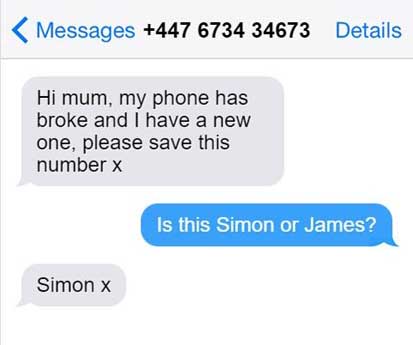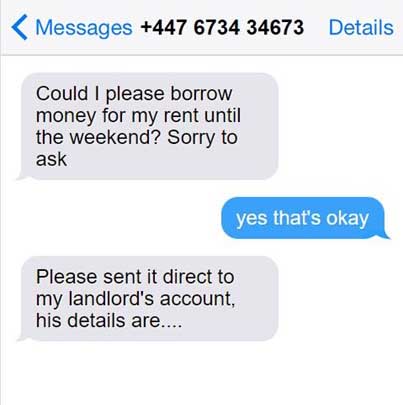How to spot and avoid “Hi Mum” message scams

Reading time 5 minutes
At a glance:
A “hi mum” or “hi dad” message scam is when a fraudster sends a message pretending to be the child of the recipient.
They ask for money to be sent to a third party. It’s a form of impersonation scam that has seen a worrying rise.
The fraudster may try to rush the person into sending money quickly.
How a “hi mum” scam works
A “hi mum” message scam works by tricking the victim into thinking they’ve been contacted by the child. They are asked to save a new number, then convinced to send money to a third party.
The scammer may say their phone is broken, so they can’t pay bills using an online banking app. The reason for the money request can vary, it could be rent, a work expensive, a favour – from hundreds to thousands of pounds.
The scammer may say their phone is broken, so they can’t pay bills using an online banking app. The reason for the money request can vary, it could be rent, a work expensive, a favour – from hundreds to thousands of pounds.


Once the money has been sent to a third party, the contact will stop. The key way this scam works is speed and urgency. The scammer wants to make sure the money is sent before the victim has chance to speak to their children and the scam is exposed.
How to spot a “hi mum” scam
Knowing how this scam works could help you to avoid it. There are two main stages to “hi mum” scam:
Asking you to save a new number – this is the first stage of the scam. The victim is asked to save a new number for their child and delete the old one.
Asking to borrow or to be sent money – this is always to a third party, not their usual bank account. There will often be an emergency that needs an instant loan or gift or money to solve.
Hannah Bingle, our Financial Crime Awareness Specialist, explains what to do if you receive a “hi mum” message:
"Scams where the sender pretends to be a loved one can be really unsettling.
If you receive a message claiming to be someone you know using a new number, don’t take it at face value. Try to call them on their existing number – you can quickly find out if the real person knows about the messages.
If you’re still not sure, you can ask something the genuine person would know but a scammer couldn’t guess. Something simple like where you last met, the name of a pet or someone you both know.
Don’t be rushed into sending anything. A real family member or friend wouldn’t mind you checking their details before handing over your money or information."
How to spot a “hi mum” scam message
If you receive a message from a number that isn’t your child’s, think about:
Is it asking for money to be sent to an account that isn’t your child’s account?
Is there a sense of urgency? Are they trying to rush you?
Does the message sound like your child? Does the tone or language seem “off”?
What to do if you receive a “hi mum” scam message
If you receive one of these messages, stop replying once you’re sure it’s not been sent by your child.
Block the number so they cannot contact you again.
Don’t give any information away, including your name or the name of your children.
You can report impersonation scams like “hi mum” messages to the NSCS.
If you’ve transferred money to someone who wasn’t who you thought they were, get in touch with your account provider as soon as you can.
Report fraud and scams to YBS
Please contact us immediately by phone or visit your local branch if you are concerned:
You may have fallen victim to a scam
You may have disclosed any confidential information to an unknown third party
You believe a transaction on your account is fraudulent
You have become a victim of identity theft
You have any concerns about security.
The content on this page is for reference. It is not financial advice. For help with money issues, try MoneyHelper.


